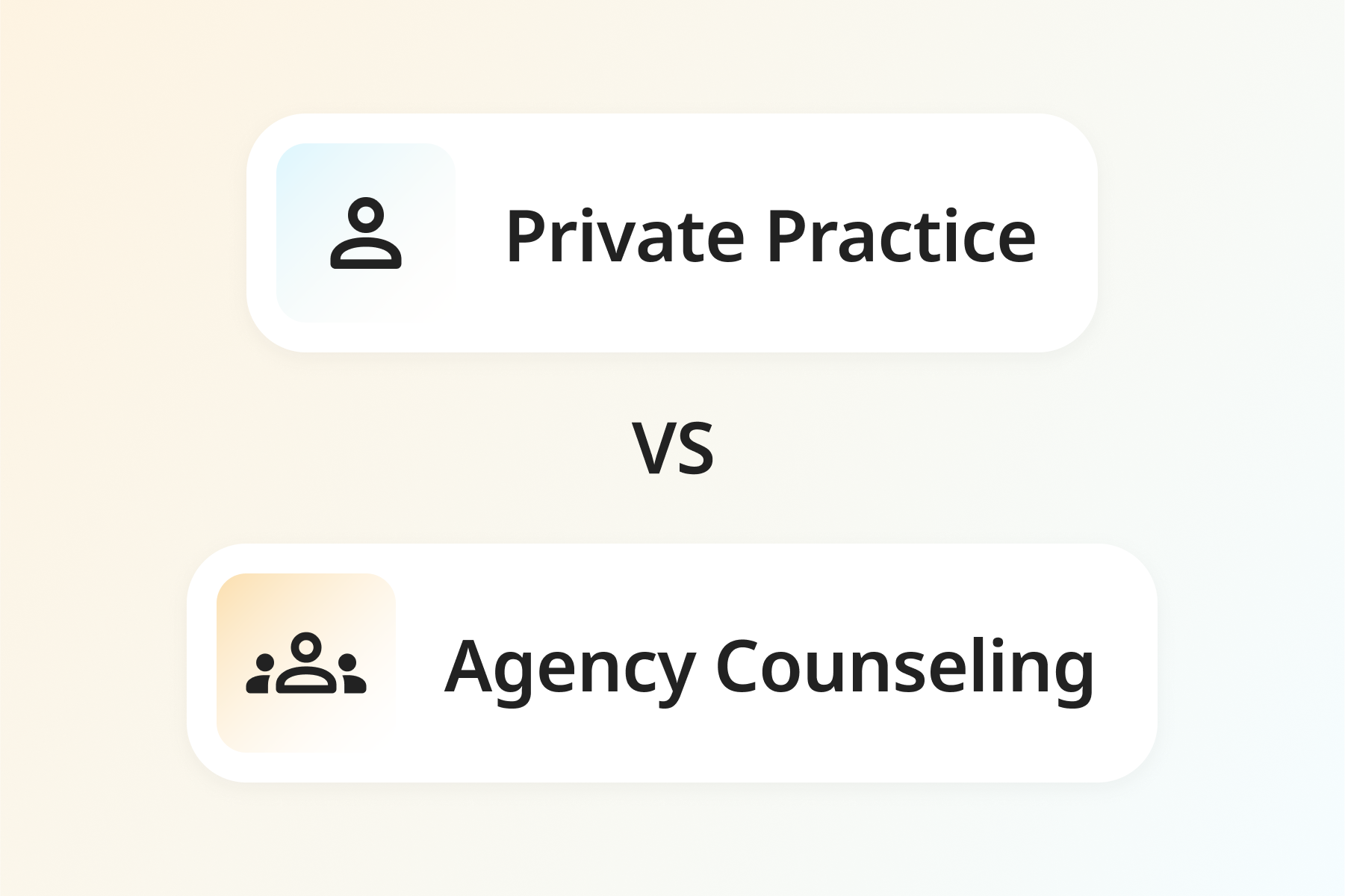Roadmap to Accepting Insurance


If you have never accepted insurance in your private practice (and don't plan to!), this article isn’t for you. But if plan to accept insurance and don’t recognize the terms “CMS-1500” or “negotiated rates” you might want to read on! In other words, this is a primer on insurance for therapists new to private practice, or perhaps striking out on their own after leaving a group practice.
First Things First: the NPI
Do you have a personal NPI (National Provider Identifier)? If not, stop here, get one, and then proceed. (Links to do so are below.) You can’t file for insurance reimbursement without one.
If you have incorporated your practice by forming an LLC or PLLC or PC or S-Corp or some other jumble of letters, you will also need a Group NPI attached to your corporation’s EIN…but these are optional if you are a solo practitioner. And if so, don’t worry about those abbreviations for now.
To apply for one or both of these NPI’s, visit CMS's NPPES website.
So, NPI in hand, let’s begin!
The In's and Out's of Insurance
Insurance comes in two basic flavors: traditional insurance (that pays well no matter which therapist the patient sees) and PPO or POS plans (which pay well only if the therapist is “in network”).
But this is akin to saying “There are two basic ice cream flavors: butterscotch-raisin and vanilla.” In other words, you will find MANY more subscribers of PPO (“Preferred Provider Organization”) and POS (“Point Of Service”) plans than traditional insurance plans.
Becoming a Preferred Provider
This means, if you want to get lots of referrals from insurance companies, you’ll need to become one of their “preferred providers.” Unfortunately, this is not an easy process! Most insurance companies want experienced therapists on their insurance “panels” -- often 2 or 3 years of documented experience as a therapist. They’ll also want you to fill out a VERY extensive application. Fortunately, the bulk of the application is universal (called "CAQH"), meaning that you can reuse it for future applications.
Finally, even if you are a well educated, experienced therapist, they won’t accept you unless they have a need for more therapists in their geographic area, or a need for your special talents (language spoken, specialty area, etc.).
Don’t despair! Apply to lots of panels and several companies are likely to accept you. Your chances are better since the COVID crisis, since the need for therapists has increased dramatically.
...Or Not
Do you have to be on a preferred provider panel to file for insurance reimbursement? No. But reimbursement rates are remarkably low for “out of network” therapists–perhaps $10.00 per session after a large deductible instead of the in-network $70.00 per session.
So, from the client’s perspective, they can choose to see an out-of-network therapist at full fee, paying perhaps $150.00 per session out of pocket and waiting for an insurance reimbursement of $10.00 weeks later. Alternatively, they can pay a $10.00 copay for their session and have the insurance company pay the therapist an additional $70.00 or so directly. Which do you think they would prefer?
Negotiated Rates
Notice that the two total fees differ. When you are part of a “panel” you must agree that, in return for getting lots of referrals directly from the insurance company, you must accept a “negotiated rate” for your services–perhaps ½ to ⅔ of your usual full fee. The steady flow of referrals is worth the reduced fees in many therapists’ opinions.
Choosing Insurance Companies for Credentialing
Which insurance companies should you pursue? The companies with the most client subscribers are below.
Medicare
Anthem
Medicaid (Applications are state-specific)
Aetna
Blue Cross/Blue Shield (Applications are state specific)
Cigna
United Healthcare
OptumHumana
In addition, if there is a large employer in your neighborhood providing employee health insurance from a smaller company, you should apply to be on that panel, too. Note that these companies vary widely in their “negotiated rates,” so find out what these are likely to be before taking the trouble of filling in the application.
Filing Claims...and Getting Paid!
So, insurance panel acceptance letters in hand, let’s begin again!
There is a paper form called the “CMS-1500” that can still be used to file claims by mail. You can fill it in with a quill pen and inkwell, if you like.
But you will likely prefer to file for reimbursement electronically, and this means using practice management software (like TherapyAppointment). The time it saves you on filing insurance claims will more than offset the monthly cost of the system.
Practice management software (like TherapyAppointment) greatly simplify the effort required to file claims. You won’t need to fill in the whole form each time you see a client: You’ll tell the system the date of service and the service you provided, and the system will take care of the rest. It will memorize all the other details that must be included with the electronic submission–a dazzling array of numbers and codes. You’ll just need to enter these codes once; the system will remember them for each submission.
For a partial list of these codes, see my article “Psychotherapy By The Numbers.” But here are some useful terms that aren’t defined in that article:
- Deductible: An amount in many insurance plans that the client must pay out of pocket for all their healthcare costs each year before the insurance will pay ANYTHING toward your fees. Zero, $1000.00, and $5,000.00 are common deductibles, depending upon which insurance plan they’ve chosen.
- Copayment or copay: for PPO insurance, this is the amount that the client should pay at the time of service. You aren’t allowed to collect more than this copay, unless you know that they are satisfying a deductible and are thus responsible for the full negotiated fee.
- Coinsurance: Some insurance companies don’t set a fixed copay for each service. Instead, they ask the client to pay a percentage of the negotiated rate after the deductible has been met. 10% and 20% are common coinsurance rates.
- Benefits verification: How can you determine whether a client has satisfied their deductible this year, and what their copay or coinsurance rates are? You must verify their benefits! The easy way to do this is electronically through TherapyAppointment. But there is a caveat: what is reported is not always accurate, especially with regard to the amount of the deductible that has been met. Best to have a credit card on file in case you find out later that the quote was wrong.
- Out of pocket maximum: most insurance plans prefer that their customers stay out of debtor’s prison, so they set a maximum amount for which the client is responsible each year. Your clients are unlikely to meet this maximum unless they have a serious illness in addition to their mental health needs.
- HMO or Health Maintenance Organization: This is a third “flavor” of insurance. I didn’t mention it earlier because there are NO out of network benefits for clients with an HMO, and many HMO therapists are paid a salary rather than being reimbursed for each service they provide. Essentially, HMO subscribers are required to see someone in the HMO network for all their healthcare needs.
- HSA or Health Savings Account: Some employers allow their workers to set aside a certain amount of their paycheck each month toward anticipated healthcare expenses. There is no income tax collected for this set-aside income. Frequently, a client with a HSA will have a special credit card that may be used only for health services. This means that, when you apply to become a “merchant” for a credit card company, you need to tell them that you are a health services provider, so those cards will be accepted for your services.
- EOB and ERA: An “Explanation of Benefits” is a letter you will receive explaining why the enclosed paper check is so small. In other words, it will list any deductions due to negotiated rates, services that weren’t covered for some reason, and deductibles that had not been met. An “Electronic Remittance Advice” is this same information in electronic form that the TherapyAppointment software can accept, digest, and post to your client’s account automatically. Most therapists who accept ERA’s also opt for direct deposit of the checks, also known as EFT (“Electronic Funds Transfer”).
Pretty complicated stuff! No worries: it will all become second nature over time.
Though dealing with insurance issues is a huge hassle, it allows you to see clients who otherwise could not afford therapy. You get to see people from all walks of life, instead of just the uber-rich! Most therapists prefer this diversity.


.jpg)

